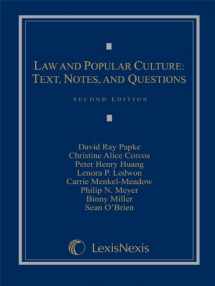
Law and Popular Culture: Text, Notes, and Questions
Book details
Summary
Description
The United States is the world's most legalistic nation not only because of its laws, lawyers, and courts but also due to the amount, variety, and appeal of its law-related popular culture. This large body of materials and experiences profoundly affects what Americans expect from their legal institutions and government. Indeed, might it be true that pop cultural law is more important in shaping the lay public's assumptions and expectations than are actual laws and real-life courtroom proceedings?
Law and Popular Culture is the first classroom text to examine the full range of American law-related popular culture. Designed primarily for law school use, the text examines the most influential pop cultural media—film, radio, television, and inexpensive fiction—but each of the text's 14 chapters begins with a list of five readily available Hollywood films that are relevant to that particular chapter. Instructors might screen selections from these lists in conjunction with their courses. After an introduction to the study of popular culture and an outline of the text's goals, the chapters themselves fall into two categories. Half concern the pop cultural portrayals of legal institutions and actors—law schools, the legal profession, clients, witnesses, judges, and juries. The second half concern assorted areas of law—Constitutional Law, Criminal Law, and Torts from the first-year curriculum and Business Law, Family Law, International Law, and Military Law from standard upper-level electives. Instructors might use the text at the pace of one chapter per week for an entire semester or pick and expand upon selected chapters as they think best.
Overall, Law and Popular Culture underscores and scrutinizes the immense role popular culture plays in shaping the American legal consciousness. Teachers and students alike can use the text to explore what Americans expect from their law and legal institutions while at the same time honing their understanding of law and of the meaning of justice under law.


We would LOVE it if you could help us and other readers by reviewing the book
Book review



